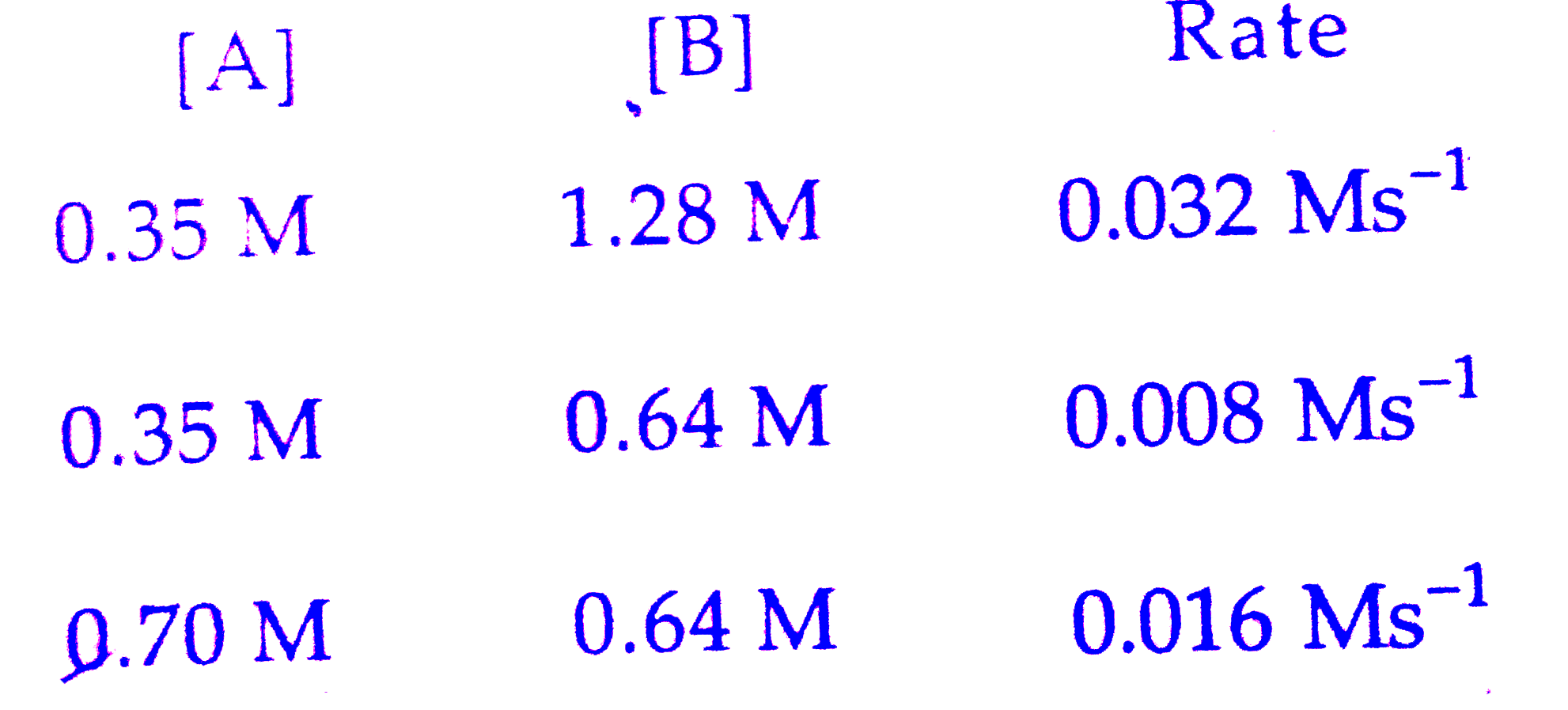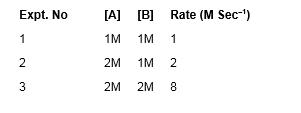From the date given below for the the reaction
A+B→ Products

the expression for rate law is :
rate =k[A]0[B]
Rate =k[A][B]
rate =k[A]2[B]
rate =k[A][B]2
Keeping [B] constant when [A] is doubled, rate is also doubled, i.e., Rate ∝[A]
Keeping [A] constant, when [B] is doubled, rate becomes 4 times, i.e., Rate ∝[B]2
Hence, rate law is rate =k[A][B]2.
Topper's Solved these Questions
Similar Questions
Form the data given below for the reaction:A→B→ Products
the rate law expression is:View SolutionThe rate law for the reaction below is given by the expresssion K[A][B].
A+B→ product
If the concentration of B is increased from 0.1 to 0.3 mole, keeping the value of A at 0.1, mole the rate constant will be :View Solution
Knowledge Check
- Question 1 - Select One
Form the data given below for the reaction:A→B→ Products
the rate law expression is:ARate=k[A][B]BRate=k[A][B]2CRate=k[A]2[B]2DRate=k[A]2[B] - Question 2 - Select One
For the reaction 2A+B→A2B, the rate law given is
Ak[2A][B]Bk[A]2[B]Ck[A][B]3Dk[A]2[B] - Question 3 - Select One
For the reaction A+B→ Product following date are given
 Order of reaction will be:A1B2C3D2.5
Order of reaction will be:A1B2C3D2.5
The rate law for the reaction below is given by the expresssion K[A][B].
A+B→ product
If the concentration of B is increased from 0.1 to 0.3 mole, keeping the value of A at 0.1, mole the rate constant will be :View SolutionThe rate law for the reaction below is given by the expresssion K[A][B].
A+B→ product
If the concentration of B is increased from 0.1 to 0.3 mole, keeping the value of A at 0.1, mole the rate constant will be :View SolutionA second order reaction between A and B is elementary reaction:
A+B → Product
rate law expression of this reaction will be:View SolutionThe rate law for a reaction A+B→C+D is given by the expression k[A]. The rate of reaction will be
View SolutionThe rate law for a reaction A+B→C+D is given by the expression k[A]. The rate of reaction will be
View Solution

